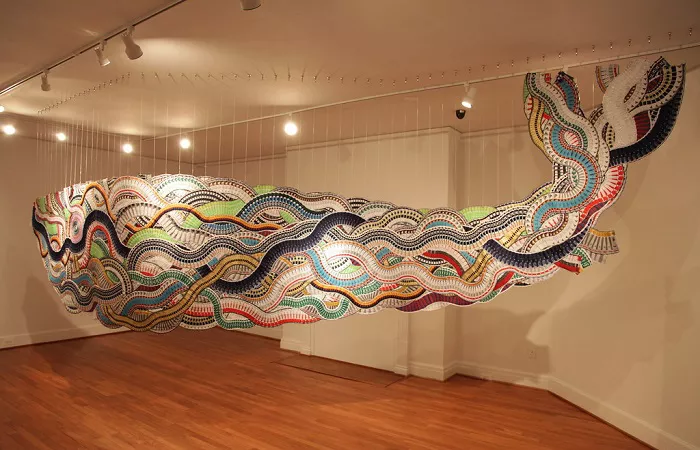Korean contemporary art is experiencing unprecedented international recognition, with major exhibitions and institutional support spanning continents. From the reopening of the Korean Art Gallery at the Peabody Essex Museum to the acclaimed traveling exhibition “Hallyu! The Korean Wave,” which has visited London’s Victoria & Albert Museum, Boston, San Francisco, and now Zurich’s Museum Rietberg, Korean art is firmly established on the global stage. This momentum has recently reached New York, where three concurrent exhibitions focus on the foundational legacies of 20th-century Korean modernism—a movement deeply shaped by political turmoil and transnational exchange.
Korean artists have engaged globally since the mid-1950s, steadily building a trajectory that is now reshaping contemporary art discourse. According to Kim Daljin, founder of the Kimdaljin Art Archives and Museums, Korean art appeared internationally as early as the 1950s but only achieved consistent global visibility in subsequent decades. This growing recognition culminated in 2022 with Frieze’s inaugural fair in Seoul, which spotlighted postwar movements like Dansaekhwa (“monochrome painting”). However, it is only recently that Korean art history has entered the collections and exhibitions of major U.S. museums. The Guggenheim’s 2023 exhibition “Only the Young,” a survey of Korea’s postwar avant-garde, marked a landmark moment as the museum’s first show dedicated to this subject.
This increasing attention is evident beyond New York. The Denver Art Museum recently showcased traditional moon jars on loan from the National Museum of Korea, while the expanded Korean gallery at the Peabody Essex Museum reintroduced significant works from its holdings. Further ahead, Dia:Beacon plans to exhibit new acquisitions by Lee Ufan, an artist central to Korean modernism.
Three New York exhibitions offer insight into how the history of Korean modernism is being presented today:
Chang Ucchin: The Eternal Home at the Korean Cultural Center New York
This exhibition marks the first solo New York show devoted to Chang Ucchin (1917–1990), a seminal figure among Korea’s first generation of modern painters. Chang’s modestly sized works, characterized by simplified motifs such as suns, trees, and houses, evoke themes of memory, longing, and spiritual stillness. The show includes over 40 paintings, drawings, and prints, featuring the poignant A Family Portrait (1972), which reflects the artist’s wartime family separation and personal history. Central to the exhibition is Golden Ark (1992), a limited-edition art book containing 12 oil paintings carefully reproduced to preserve their intimacy. Co-organized with the Chang Ucchin Museum of Art Yangju, the exhibition runs through July 19.
The Making of Modern Korean Art: The Letters of Kim Tschang-Yeul, Kim Whanki, Lee Ufan, and Park Seo-Bo, 1961–1982 at Tina Kim Gallery
More than a retrospective, this archival exhibition illuminates the vibrant intellectual exchange that forged Korean modernism. Featuring unpublished letters alongside seminal works by the four artists, the show highlights their efforts to establish a modern Korean art identity distinct from Western influences. Letters reveal deeply personal reflections, practical concerns, and philosophical debates, emphasizing modernism as a communal and dialogic process. A 1973 letter from Kim Whanki to Kim Tschang-Yeul poetically discusses the Waterdrop series, underscoring the emotional resonance of their artistic labor. The exhibition coincides with the release of an English-language publication documenting this correspondence and continues through June 21.
Heryun Kim: The Great Tomb of Hwangnam and Other Paintings at Bienvenu Steinberg & C
Heryun Kim’s first U.S. exhibition centers on an installation of 164 ink drawings inspired by the Silla dynasty’s Hwangnam Daechong tomb metal saddle. Her work employs thick, labyrinthine lines that vary subtly, creating a rhythmic visual language embodying ancestral time and labor. Drawing on Korean heritage, including ancient pottery, dolmens, and oral traditions, Kim’s practice is deeply material and sensory, viewing ink as a living force rather than mere pigment. Her brushwork channels both personal intensity and cultural memory, inviting viewers into a contemplative engagement with history and form. The show is on view through June 14.
Together, these exhibitions provide a comprehensive view of Korean modernism’s complex origins and enduring influence, underscoring its vital role in the broader narrative of contemporary art.


